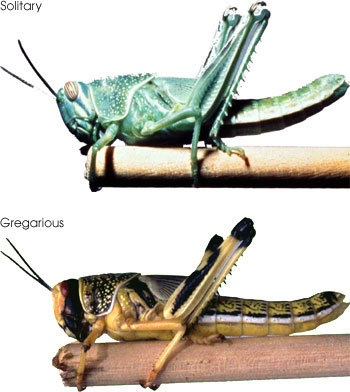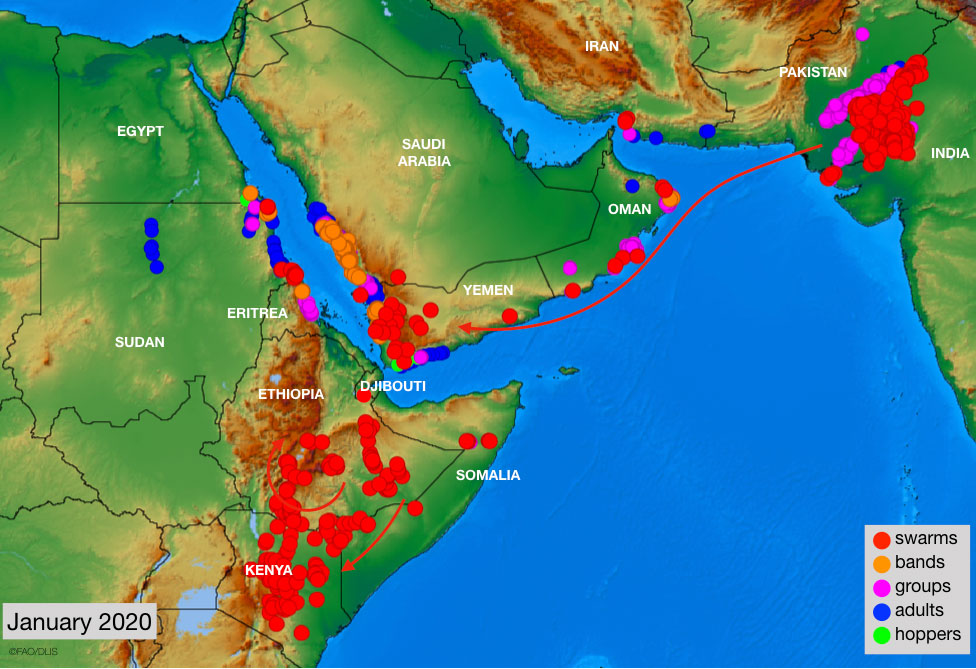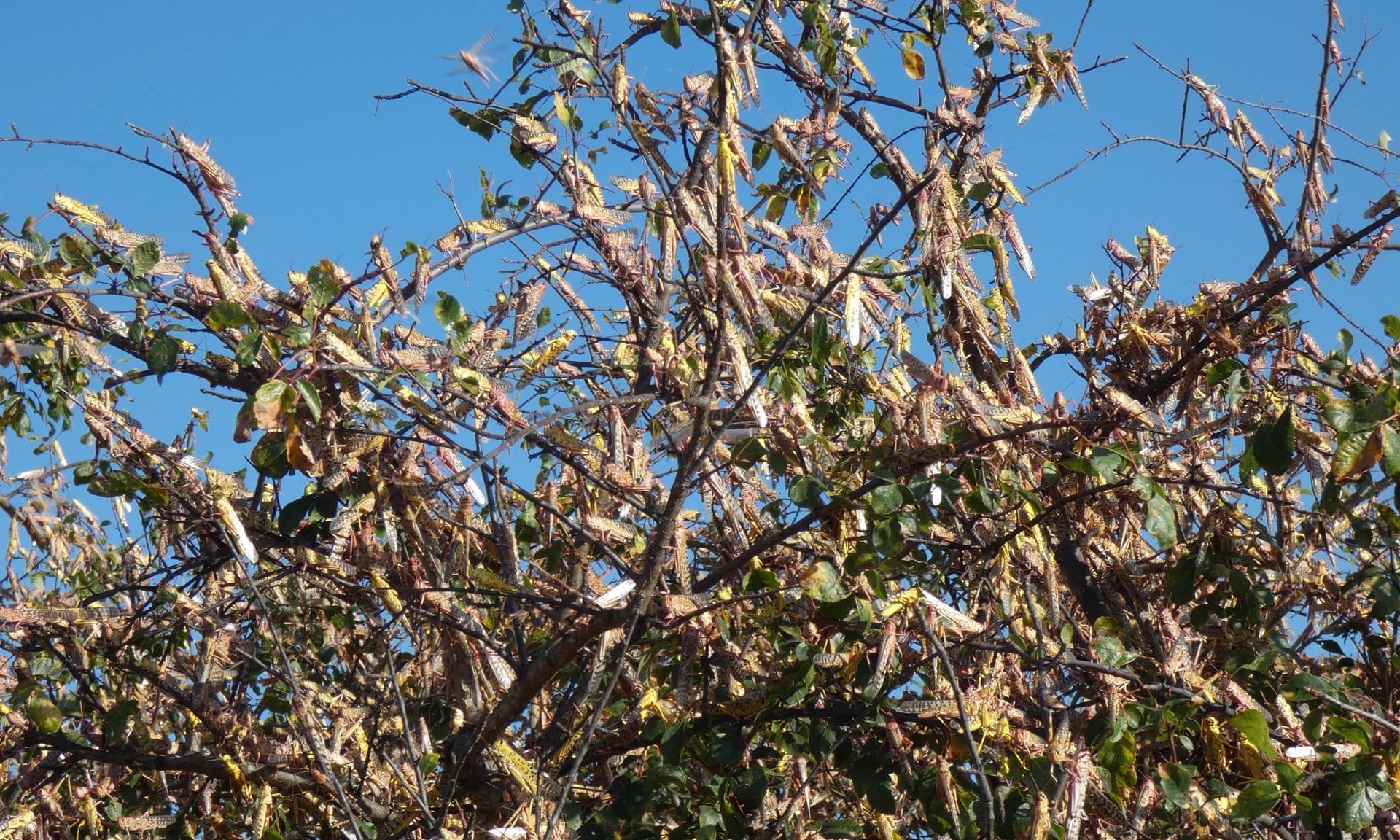East Africa threatened by swarms of desert locusts
Sentinel-3 OLCI FR acquired on 01 January 2020 at 06:59:18 UTC
Sentinel-2 MSI acquired on 06 January 2020 at 07:32:09 UTC
...
Sentinel-3 OLCI FR acquired on 08 February 2020 at 07:14:17 UTC
Sentinel-2 MSI acquired on 10 February 2020 at 07:30:31 UTC
Sentinel-2 MSI acquired on 06 January 2020 at 07:32:09 UTC
...
Sentinel-3 OLCI FR acquired on 08 February 2020 at 07:14:17 UTC
Sentinel-2 MSI acquired on 10 February 2020 at 07:30:31 UTC
Keyword(s): Land, agriculture, crops, farming, food security, Ethiopia, Kenya, Somalia
On 30.01.2020, Andrew Wasike reported for Deutsche Welle: "Billions of desert locusts have darkened the skies of East Africa. The infestation could have disastrous effects on the region that's still reeling from recent drought and aggressive flooding. The UN's Food and Agriculture Organization (FAO) has warned locust swarms have already damaged tens of thousands of hectares and are threatening the region's food security."
These grasshoppers are innocuous while their numbers are low, and they do not pose a major economic threat to agriculture. However, under suitable conditions of drought followed by rapid vegetation growth, serotonin in their brains triggers a dramatic set of changes: they start to breed abundantly, becoming gregarious and nomadic when their populations become dense enough. They form bands of wingless nymphs which later become swarms of winged adults. Both the bands and the swarms move around and rapidly strip fields and cause damage to crops. The adults are powerful fliers; they can travel great distances, consuming most of the green vegetation wherever the swarm settles.




Left: solitary (top) and gregarious (bottom) desert locust. Solitary locusts are distinct from gregarious locusts in their coloration, shape, scent, and behavior. The most dramatic color changes occur among juveniles (these pictures). In mature adults, the color change is normally from brown to yellow. Source: Compton Tucker, NASA GSFC
Right: Desert Locust situation in January 2020 - source: FAO locust watch
A communicate prepared by the FAO on 10 February 2020 states: "Breeding continues in the Horn of Africa, which will cause locusts to increase further in Ethiopia, Somalia and Kenya with new swarms forming in March and April. Consequently, there is an unprecedented threat to food security and livelihoods in the region.
In Kenya, numerous immature and mature swarms continue to move throughout northern and central areas. Mature swarms reached within 50 km of the Uganda border on 6 February and other mature swarms nearly reached the Tanzania border on the 7th. Widespread egg laying and hatching have started, and so far numerous dense early instar hopper bands are present in some central areas. Aerial and ground control operations are continuing."
"On 9 February, there were reports that Desert Locust arrived in northeast Uganda near Amudat (0157N/3456E). Other reports indicated that Desert Locust had crossed the border into northern Tanzania close to Mt. Kilimanjaro, reaching Arusha and Mushi.
In Somalia, second to fourth instar hopper bands are present in the northeast near Garowe. Other infestations are likely to be present in the northwest, central and southern areas where breeding is expected to be in progress."
"In Ethiopia, maturing swarms were present in eastern and southern areas and additional swarms moved into the Rift Valley from the south and the north. Egg-laying and hatching are likely to be underway but so far it has not been detected. Aerial and ground control operations continue in most areas.
Widespread hatching and band formation will occur in the coming weeks in Kenya, Ethiopia and Somalia. There remains a risk of a few small swarms appearing in northeast Uganda, southeast South Sudan and perhaps northern Tanzania in the coming days."
On 10 February 2020, UN News published the following information: "An average swarm, which contains up to 40 million insects, can travel up to 150 km in a single day and can devour enough food to feed 34 thousand people within that time." According to the FAO, this cluster of swarms, formed by 200 billions of individuals grouped over 2400 km² will consume its own weight in vegetation daily, 400 000 tons.
"'It is these weather events which are creating the environment to facilitate the current locust outbreak', Mr. Mark Lowcock, the UN humanitarian chief, explained. 'Unusually heavy rains and increase in the frequency in cyclones in the Indian Ocean have created favourable conditions for the locusts to breed.'" According to FAO expert Keith Cressman, the number of cyclones in the Indian Ocean has increased during the last decade, 9 in 2019.


Left: Desert locusts in northern Kenya - source: The Laikipia Farmers Association/Handout/EPA
Right: A man passing through a locust swarm on 17.01.2020 in Samburu, Kenya - source: Njeri Mwangi / Reuters
After three consecutive years of drought, stockbreeders now face a threat to the food resources of their cattle. Crops had already been harvested in the Horn of Africa before the swarms arrival. Yet, if swarms are still a menace during the seeding season in March, then farmers may lose their season entirely.
The infestation in Kenya is the worst in 70 years, while Somalia and Ethiopia are experiencing their worst outbreaks in 25 years, putting crop production, food security and millions of lives at risk.
"With the rainy season fast approaching, countries in the Horn of Africa are in a race against time to tackle a Desert Locust invasion amidst ongoing humanitarian challenges, the United Nations warned on Monday.", says the UNO report.














